Chain Of Command: Take Charge Of Your Own Platoon!
June 4, 2014 by crew
Chain of Command is a rules set created by Too Fat Lardies in the summer of 2013. Many members of Beasts of War have been commenting on this game system for quite some time now and thought it should get some attention as some of the other rule sets that are available were getting all of the coverage. They thought this one should be covered and made the point that they even said it presents a more realistic simulation of combat in World War II than some of the other rule sets. What I won’t do here is do a comparison and say one is better than the other. After reading this rulebook and knowing the other systems gameplay what I can say is they definitely cater to different sects of players.
Let me start by saying that the creators of Chain of Command have done a brilliant job of explaining the scale and measurements on what size miniatures you can play with. Obviously in my case I have 15mm and 28mm WWII figures that I use in my other game systems. But, with this system they tell you how to scale games to any size of figures and how to convert the measurements for ranges etc. This is nice because most of us out there own a myriad of WWII figures and you can just pick up this rulebook and start playing. It also means you do not have to outlay a ton of money for more miniatures. Another nice touch is that you do not really need to use any special dice as regular D6 will do and there are downloadable markers from their website that you can print out or you can of course make your own.
The Patrol Phase: Find the Enemy
In Chain of Command, you start the game with what's known as the Patrol Phase. This is a very unique mechanic in which each player gets a certain number of the large 2.5” round markers (usually 3 or 4 depending on the scenario) and what you do with these is move them around the table from a designated starting location as indicated by the scenario you are playing, 12 inches at a time. Alternating between the players with the player with the higher Force Moral (rolled at the start and adding or subtracting any modifiers based on your army stats) going first until you come within 12 inches of an enemy marker. That marker is now locked down and cannot move. This continues until one side’s markers are all locked down. Only one team needs to be locked down to end the Patrol Phase.
Next you determine where your Jump-Off Points are going to be located. These are the entry points for units coming onto the table. These are established by being a minimum of 6 inches away from the closest two enemy markers and in or directly behind cover. If they cannot be in cover then they go to the table’s edge on that players side. What this does is give the player options to bring new units into play from established control points and not just from a random edge.
You need to remember that in Chain of Command the playing area is measured in yards or meters and not in miles so most action is within close proximity of the enemy. Another nice mechanic to these Jump-Off points is that they can be moved as your forces are gaining more real estate so you can deploy any remaining units closer to the action. On the other hand you can capture an enemy Jump-off point and deny them use of it and if they can’t re-take it by the end of the turn it gets removed from the game. This can lead to some interesting strategies and denying the enemy reinforcements.
The Turn: Fog of War & The Unknown
Another interesting aspect to Chain of Command is that each turn consists of phases and these are never the same in regards to the number of phases and length of a turn. Within each phases you roll the number of command dice that is assigned to your platoon based on the scenario and troop type (usually 5) and based on those results this determines what units can activate, who gets to act in the next phase and if you get assigned Chain of Command points or even if the turn ends. The dice results are as follows:
1) Activate or deploy one team
2) Activate or deploy one section or squad with its junior leader (Sgt or Corporal)
3) Activate or deploy one junior leader with his section, squad or team
4) Activate or deploy one Senior Leader (Officer or Platoon Sergeant)
5) Add one point to your Chain of Command points total
6) Phase sequence dice
So as you can see depending on your roll you may or may not get to activate units or get the next phase. Another interesting point is that you can combine lower numbers to get to up to 4, but cannot combine for a 5 or 6 and you also cannot break large numbers down to smaller numbers for activations. Rolling 6 provides for an interesting aspect to the phases. 1 or less rolled 6 means the next phase is your opponents, rolling two 6’s and the next phase is yours, three 6’s and this is the final phase of the turn and the first phase of the next turn will be yours. Four or more 6’s and this is the final phase of this turn along with the first phase of the next being yours and gaining a complete Chain of Command dice and a roll of a random event (from mortar barrages to rain, yes rain to effect movement). This again leads to some very interesting strategy by the players. Just as in real life a good commander has to be able to be flexible with their plans and be able to react to the changing conditions of the battlefield.
Movement is handled a little differently than what I am used to. In my other games you had a movement range that your units could move up to, but how far they actually moved was up to you with other factors figured in. In Chain of Command you roll dice to see how far they move with terrain and other factors involved. Now, I am not sure if I am sold on this mechanic. The authors of the rules state this is to take into account the more cautious and less predictable events happening on the battlefield. Take for an example the movement “at the double” with this rule you roll 3D6 and take a point of shock to reflect disorder. Now lets say I roll my three die and I roll a 1, 1 and 2. So I have now only moved my unit a total distance of 4 inches and they are now disorganized with a shock point against them.
I think this might want to be re-examined as to how this is played. I think this should be modified by the level of the troops. I can tell you from my real life experience with the 82nd Airborne, if we were given the order to move at the double we ran and we were still able to take the fight to the enemy. For the sake of gameplay I can understand the reasoning they had in writing that rule. It is also nice to see that leadership plays such a big role in the game since it's at the platoon level. You have leaders with activation point and how many is based upon the rank (level) and being able to order those within their command to attempt certain tasks.
Also, with your leaders when you get to 6 Chain of Command points you get a Chain of Command dice and you can collect as many of these as you want, however only one at a time can be used and then it must be discarded. The choices you can have are: Interrupt (your opponents phase), End a turn, Move a friendly jump off point, Ambush, Relocate a sniper. Avoid taking a Force Morale Test and Keep a Mortar barrage firing on a turn end (normally this would end with the end of a turn).
Combat within Chain of Command is not all too different than what you may be used to. There is line of sight to always consider and the type of target you’re shooting at and its cover factors. Now one item that I really like about this game is the grenade rules. I think they are pretty slick and I like how they differentiate between hand and rifle fired grenades and the possibility of human error in deploying grenades. Another item that caught my attention as I was reading through the rules was the use of vehicles and there is a rule for ramming tanks (Totally thought of Warren from one of the demo games he had done where he wanted to do this with his Stug).
The Debriefing
So, what do I think of Chain of Command? I think it does a really great job of trying to create a more realistic view of platoon level combat actions in World War II. It will definitely be seeing more play time on my game table. I purchased the tablet edition which is nice to be able to carry with me and has very nice reference points within the text for certain rules that are accessed often. I think anyone who likes historical games and World War II will enjoy this rule set immensely. The creators obviously took a lot of time to make a game that flows nicely and plays really well along with being a lot of fun. The rule book is easy to read and has some very nice diagrams and sidebar explanations to certain rules with some nice historical interjections add throughout.
As a side note, the rulebook is 102 pages and packed with a lot of detail that just could not be covered in great detail within the scope of this article, can there be a demo game in the near future?
Homemade Jumping Off Points - Tim Patterson
Battle Images - Trouble At T'Mill
If you would like to write an article for Beasts of War then please contact us at [email protected] for more information!
"I think it does a really great job of trying to create a more realistic view of platoon level combat actions in World War II..."
Supported by (Turn Off)
Supported by (Turn Off)
Supported by (Turn Off)









































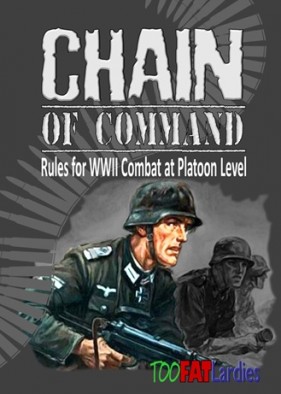
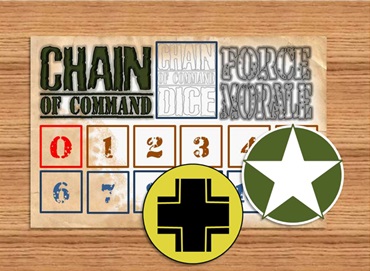
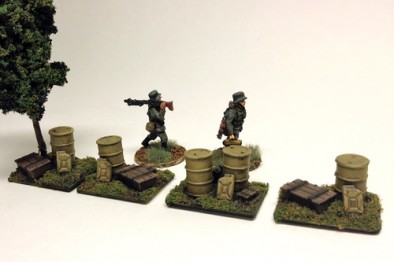
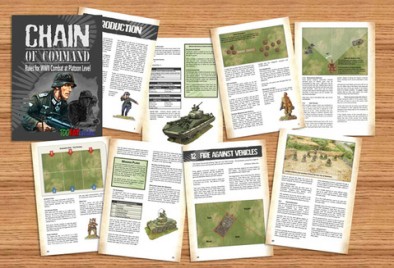
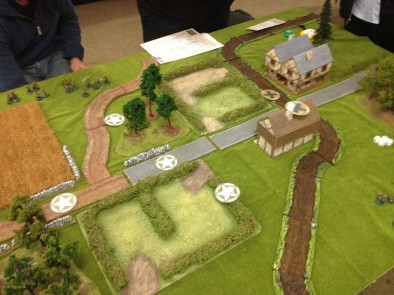
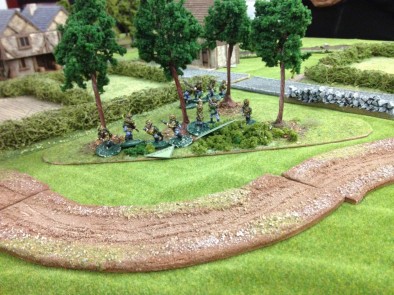
































The random movements are a bit of a Lardie trademark. It’s something that takes a bit of getting used to if you’re used to minis having a set standard movement rate. I had real issues with it when I first encountered it in Dux Britanniarum, but now I’m three games into the campaign it just comes naturally. If it helps at all, the scenario you describe of rolling a total of 4 when moving on the double, try not to think of it as a troop problem but a command & control problem. Lardie games are never about what the… Read more »
Congrats on your 1000th karma point! You’re now a member of the elite “four-digit” club! 😀
Why thank you. And what did I do to deserve such an achievement? I am reminded of Arnold Rimmer and his medals (about 24.40 in) – http://vimeo.com/67457004
There seems to have been some text disappear from that post lol. Watch about 24.40 in when Arnold explains what he did to get his medals.
Nice. I wound up listening to the first 6 minutes or so and wound up hooked on the episode. 😀 This is the “Risk” guy, right? “And then I rolled a 5 and a 6. And then I rolled a 2 and a 3 …”
So are you now waiting for your “15 Years Long Service” medal?
That is he. The one and only Arnold Judas Rimmer.
Well done mate lol
Agree with Redben over the movement,of course if you didnt like it then just change it
Very nice to see the review though and a good company getting some exposure here on BoW
Sharpe Practice and its Supplements by Too Fat Lardies are also well worth looking at if you like Napoleonic’s , AWI or ACW etc had some great games .
We used a load of Italeri 1/72 (20mm) miniatures for Chain Of Command and Sharpe Practice games and it worked well and made it good value cause we had about 70 guys in a box which gave us good little starter armys, also used 15mm FOW/Battlegroup Stuff for it i agree when you say it works well 🙂
So does this mean I have an option for all these 1:35 airfix soldiers to be used with at last??!!
Awesome article! The writing really gives a taste of what makes CoC different from others, without putting one game “above” any others. If what the tag lines says is true: “I think it does a really great job of trying to create a more realistic view of platoon level combat actions in World War II …” Of course I don’t know myself, but a lot of “history-heavy” players are giving this the thumbs-up, both on BoW and other sites. I may have to honestly give this thing a try, at least for infantry-heavy battles. The only thing I’m leery about… Read more »
Though the examples are all sound, they still look at it from the point of view of the unit and not the command structure. Combine them with things like the order arriving late, garbled, or not fully understood. The effect it goes for is more a “fog of war” in which you have only limited control over your troops. As @torros says, if you don’t like it then change, but I would recommend playing a few games with it first.
having now played more then 20 games of chain of command i can confirm its a GREAT game. the best part is the patrol phase deployment set up which completely changes the standard idea of both sides setting up 6″ or 12″ in from the their edge. The activation is also really different and takes a while to get used to but again is a real strength of the game. If you have 28mm WWII gear you should give the game a go. Its a game which you can tell has gone out of its way to be different and… Read more »
Look at it like this. Because real life is not split into turns, the NCO who is responsible for getting the order done took a second to think about it. Rather than ending up 12 inches away, where his officer intended, he ended up just 6 inches away at the moment the turn ends. So, if he doesn’t get shot at, next turn he’ll finish off his move and get to where he was heading for. But, because he hesitated to check the terrain, or whatever other reason, he just hasn’t got there yet. A turn in CoC is just… Read more »
Just to give an example of what the movement distances model, I had a situation occur in my last game of DB (it’s recounted in the batrep on the thread), in which I charged my levies at a missile unit which fled, and rolled 17″ of movement on 3D6 which took me all the way into combat with the enemy warriors. I hadn’t anticipated it happening, didn’t plan for it, and probably wouldn’t have done it given the choice (though it worked out quite well), but as the army commander I had to adapt to it. Essentially, I gave the… Read more »
It is a great game, a thinking game, and not just move and shoot. The biggest drawback is that you really have to hunt the rules down that you want only to find that they don’t exist. Example; you can recruit a Commissar into your force, but they don’t tell you what he does, or there are rules for the Goliath but nothing about how to field one in your force.
Fair points and my one real issue with Lardie games. I know there a gamers who don’t have an issue with filling in the gaps themselves, but I don’t think it’s too much to ask that the rules be written without them. That said, Richard is active on the forums and with FAQs. In the case of commissars, according the FAQ their rules will be in the respective army lists as their roles were different at different times.
The Commissar rules apparently differ for different phases of the war, so the rules are on the individual army lists they are producing. I presume the Goliath will be listed in a forthcoming list. The good thing is that the lists are free.
Great review of a really good rule set. We dispensed with our FoW collection as we were dissatisfied with how the games felt. We much prefer CoX as for us it gives a much better game.
It is interesting to learn about games played from a different perspective.
I’ve tried a number of WW2 skirmish rules and this is without a doubt the best (IMHO).
You cannot be sure just how your plans will go and this is realistic – the first casualty in any battle is the plan 🙂
I must admit that WW2 gaming is a period I return to again and again. In 1:72 it is absolutely cheap as chips (@and not particularly expensive at 28mm either), there are some great vehicles (and aircraft! ) and loads of different rulesets so you can find one to your taste, and change it to keep your magpie instincts honed!
Always nice to hear about another style of playing any war-game that takes a step outside of the traditional IGYG phases. It is always a little difficult to introduce people to something outside their comfort zone in this respect but very rewarding when they find they enjoy the experience.
I like the explanations people have come up with to explain the relevance of having a randomised movement/action phase. It actually allows for greater player “narrative” throughout – warzan’s catch word, not mine lol – which could make for a more entertaining game and appeals to my role-player heart.
A note on the random movement…just my opinion… The result of the dice roll does not necessarily represent how fast/well the troops move (as in the examples cited above), but also (if not moreso) how far they move that phase (not turn) before other units (friend and foe) can react to that movement (ie: the next phase). Thus, a (poor) roll of ‘4’ on 3d6 could represent a section/squad running across fair ground without any pausing/tripping/whatever (ie: at a ‘pace equal to a roll of, say, 15), but…they only got 4-inches along before the next orders (be they of the… Read more »
Aha, they have a sale on for the next 24 hours! Time to get the game tokens.
It includes all of their WW2 products so fill your boots, folks!
Yes!!! A demo game, come-on guys, get one set up. Have never played a TFL set of rules but have always heard good things about them. May look into this one. Would certainly like to see a similar treatment as the Bolt Action demo a few months ago. Thanks for the review.
Good review there:-) Yes would love to see a CoC demo game on here as well I am sure they have all they need:-) The thing that actually drew me into the game was that my first game I had a regular British Platoon taking on a regular German one, on paper the German force was stronger, but in the event I was able to beat the German platoon and it was down to the phasing and the turns of the game having a number of phases in a row really tipped the balance at a critical point. To me… Read more »
As much as I have liked the games of CoC I have played, it has brought back memories of the great games of Crossfire we used to play I think its time for that to get a run our again very soon